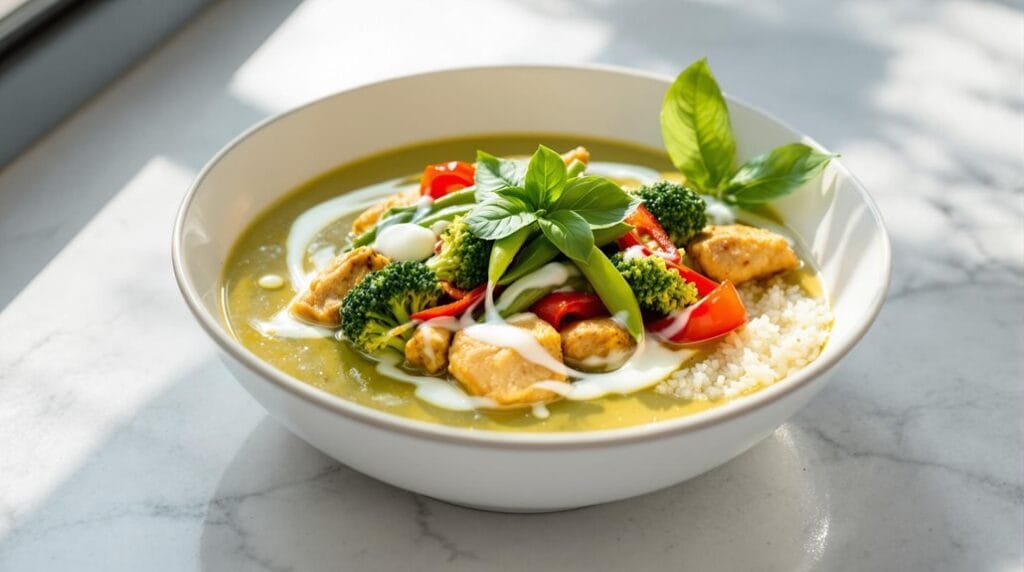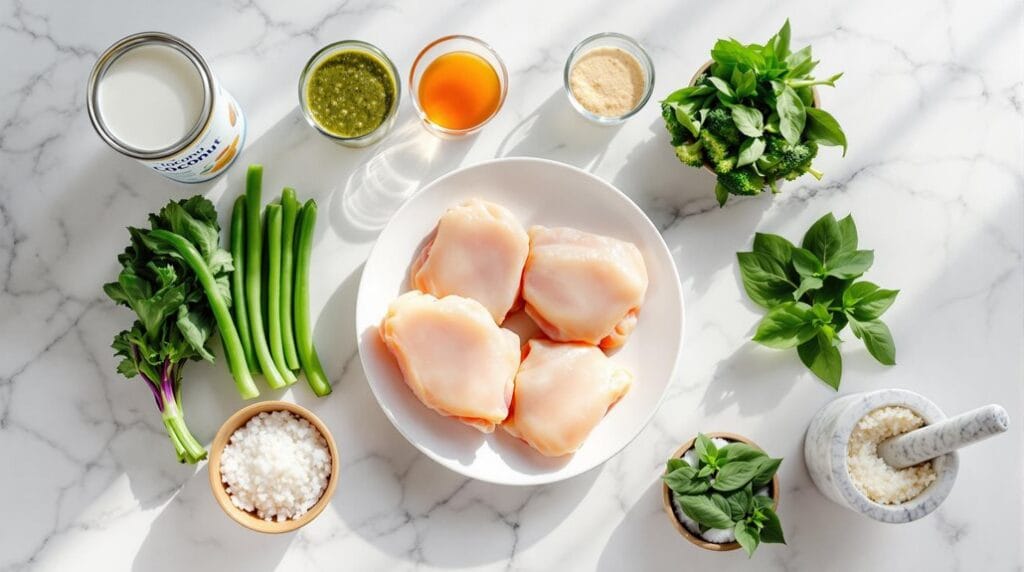Servings 4
- Amount Per Serving
- % Daily Value *
- Total Fat 49.61g77%
- Saturated Fat 24.44g123%
- Trans Fat 0.15g
- Cholesterol 123.97mg42%
- Sodium 1109.89mg47%
- Potassium 897.03mg26%
- Total Carbohydrate 49.27g17%
- Dietary Fiber 4.27g18%
- Sugars 7.24g
- Protein 29.03g59%
- Vitamin A 122.71 IU
- Vitamin C 81.43 mg
- Calcium 100.84 mg
- Iron 7.59 mg
- Vitamin D 0.12 IU
- Vitamin E 3.1 IU
- Vitamin K 70.97 mcg
- Thiamin 0.44 mg
- Riboflavin 0.34 mg
- Niacin 9.47 mg
- Vitamin B6 0.83 mg
- Folate 86.74 mcg
- Vitamin B12 0.82 mcg
- Phosphorus 404.19 mg
- Magnesium 126.41 mg
- Zinc 3.17 mg
* Percent Daily Values are based on a 2,000 calorie diet. Your daily value may be higher or lower depending on your calorie needs.
Note
Tips: For best results, cut vegetables into similar-sized pieces to guarantee even cooking. If the curry sauce becomes too thick, add a splash of water or coconut milk. The curry can be made milder by reducing the amount of curry paste or spicier by adding fresh chillies. Leftovers can be stored separately (curry and vegetables) and reheated, though the vegetables may lose their crispiness.
Aromatic Curry Comfort Food
Comfort radiates from every spoonful of this aromatic green curry, where the rich coconut milk base melds perfectly with fragrant herbs and spices.
You'll find that each bite brings a harmonious blend of lemongrass, galangal, and kaffir lime leaves, creating that authentic Thai flavour you've been craving. The warmth of this dish isn't just about temperature - it's about the way it soothes your soul after a long day.
As you dig into your bowl, you'll notice how the tender chicken pieces have absorbed the curry's complex flavours, while the colourful vegetables add both texture and nutritional value.
The beauty of this comfort food lies in its balance: it's creamy without being heavy, spicy without overwhelming your taste buds, and satisfying without leaving you feeling stuffed.
Whether you're battling cold weather or just need a pick-me-up, this curry delivers that cosy feeling you're looking for.
It's the kind of meal that makes you want to sink into your favourite chair and savour every moment, letting the aromatic steam warm your face as you enjoy each delightful spoonful.
Conclusion
You'll find that Thai green curry chicken in your Ninja Speedi brings together centuries of traditional Thai cooking with modern convenience. Whether you're craving authentic flavours or simply want a quick, comforting meal, this dish delivers both. The combination of creamy coconut milk, aromatic spices, and perfectly cooked vegetables creates a restaurant-quality experience right in your kitchen. It's a delicious way to explore Thai cuisine while making the most of your appliance.
Did you make this recipe?
Follow @easyrecipes.pro on Instagram for more recipes.
Pin this recipe to share with your friends and followers.



